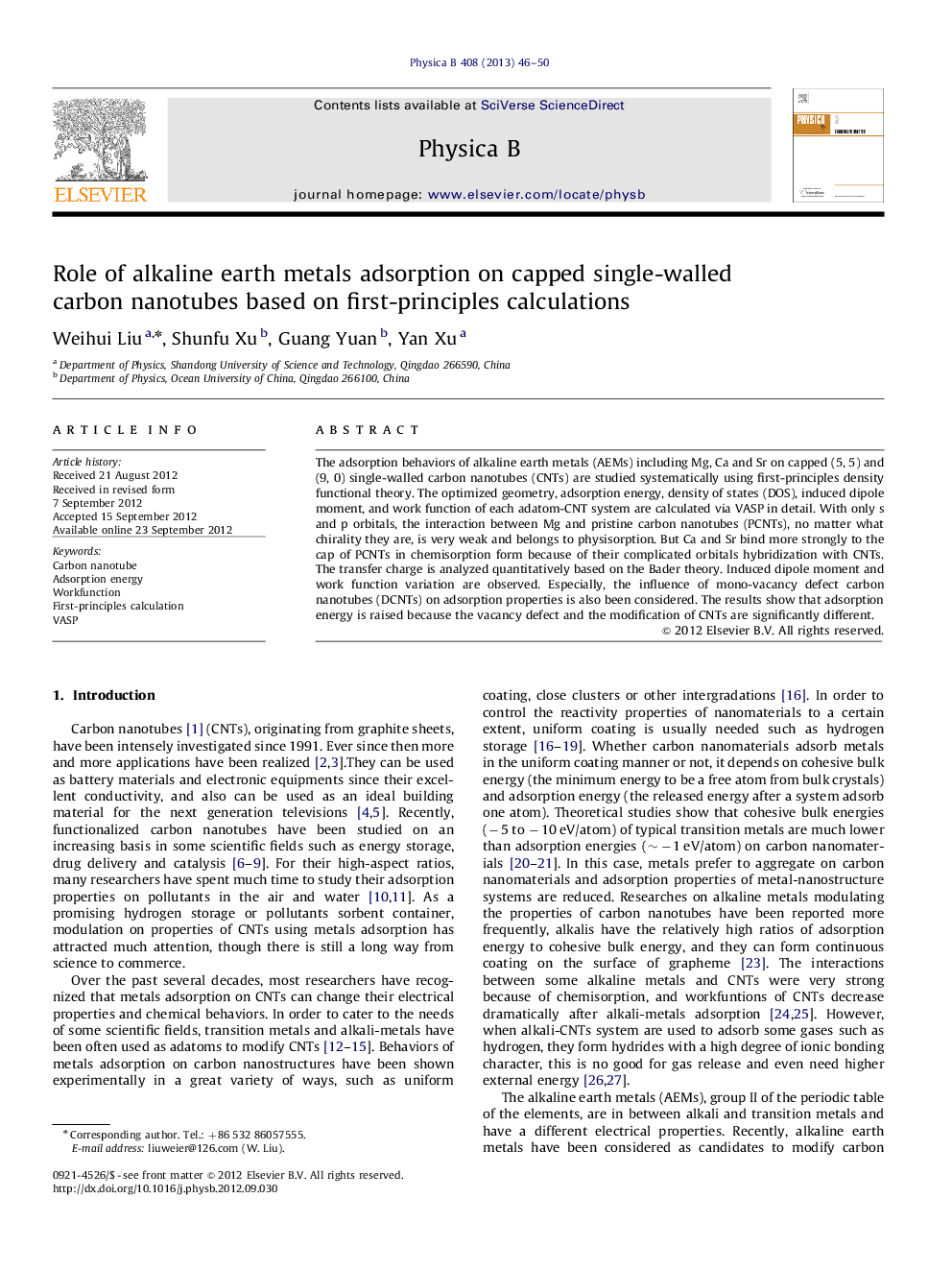| Article ID | Journal | Published Year | Pages | File Type |
|---|---|---|---|---|
| 1810410 | Physica B: Condensed Matter | 2013 | 5 Pages |
The adsorption behaviors of alkaline earth metals (AEMs) including Mg, Ca and Sr on capped (5, 5) and (9, 0) single-walled carbon nanotubes (CNTs) are studied systematically using first-principles density functional theory. The optimized geometry, adsorption energy, density of states (DOS), induced dipole moment, and work function of each adatom-CNT system are calculated via VASP in detail. With only s and p orbitals, the interaction between Mg and pristine carbon nanotubes (PCNTs), no matter what chirality they are, is very weak and belongs to physisorption. But Ca and Sr bind more strongly to the cap of PCNTs in chemisorption form because of their complicated orbitals hybridization with CNTs. The transfer charge is analyzed quantitatively based on the Bader theory. Induced dipole moment and work function variation are observed. Especially, the influence of mono-vacancy defect carbon nanotubes (DCNTs) on adsorption properties is also been considered. The results show that adsorption energy is raised because the vacancy defect and the modification of CNTs are significantly different.
